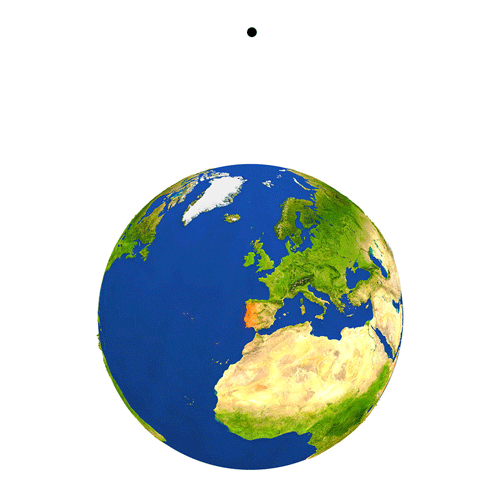Precise Free Fall

Assume that Earth is a perfect sphere with radius Let be the time an object takes to fall to the ground from rest from a height of above the ground and
Find
Note: Consider only gravity, and forget about atmospheric effects, air resistance, etc.
The answer is 40.
This section requires Javascript.
You are seeing this because something didn't load right. We suggest you, (a) try
refreshing the page, (b) enabling javascript if it is disabled on your browser and,
finally, (c)
loading the
non-javascript version of this page
. We're sorry about the hassle.
If r is the distance of the object from the centre of the earth, then d r d ( 2 1 r ˙ 2 ) = r ¨ = − r 2 g R 2 and hence 2 1 r ˙ 2 = r g R 2 − R + h g R 2 = ( R + h ) r g R 2 ( R + h − r ) so that the time T to hit the ground is (using the substitution r = ( R + h ) sin 2 θ ) T = ∫ R R + h 2 g R 2 ( R + h − r ) ( R + h ) r d r = 2 g R 2 R + h ∫ sin − 1 R + h R 2 1 π tan θ 2 ( R + h ) sin θ cos θ d θ = 2 g R 2 ( R + h ) 2 3 ∫ tan − 1 h R 2 1 π ( 1 − cos 2 θ ) d θ = 2 g R 2 ( R + h ) 2 3 { 2 1 π − tan − 1 h R + R + h R h } = 2 g R 2 ( R + h ) 2 3 { tan − 1 R h + R + h R h } Putting k = R h we see that T 0 T = 2 1 ( 1 + k ) 2 3 { k 1 tan − 1 k + 1 + k 1 } Writing down the Maclaurin expansion of T 0 T , we see that T 0 T = 2 1 ( 1 + 2 3 k + 8 3 k 2 + O ( k 3 ) ) { ( 1 − 3 1 k + 5 1 k 2 + O ( k 3 ) ) + ( 1 − k + k 2 + O ( k 3 ) ) } = 2 1 ( 1 + 2 3 k + 8 3 k 2 + O ( k 3 ) ) ( 2 − 3 4 k + 5 6 k 2 + O ( k 3 ) ) = 1 + 6 5 k − 4 0 1 k 2 + O ( k 3 ) and hence 6 k 5 − k 2 1 [ T 0 T − 1 ] = 4 0 1 + O ( k ) where all these asymptotic statements as as k → 0 . Thus we deduce that h t o 0 lim [ 6 h 5 R − h 2 R 2 ( T 0 T − 1 ) ] = 4 0 1 which makes the answer 4 0 .